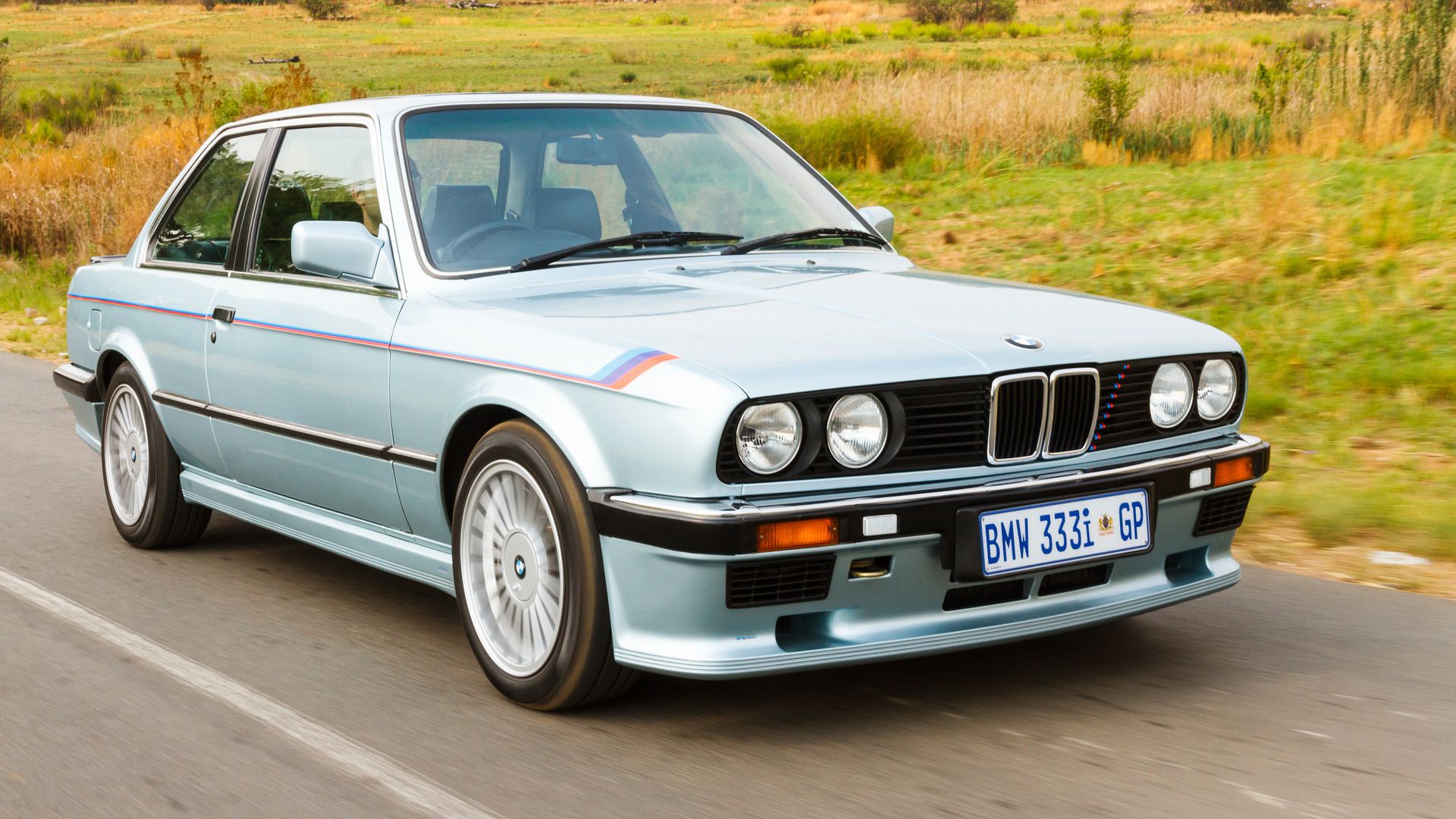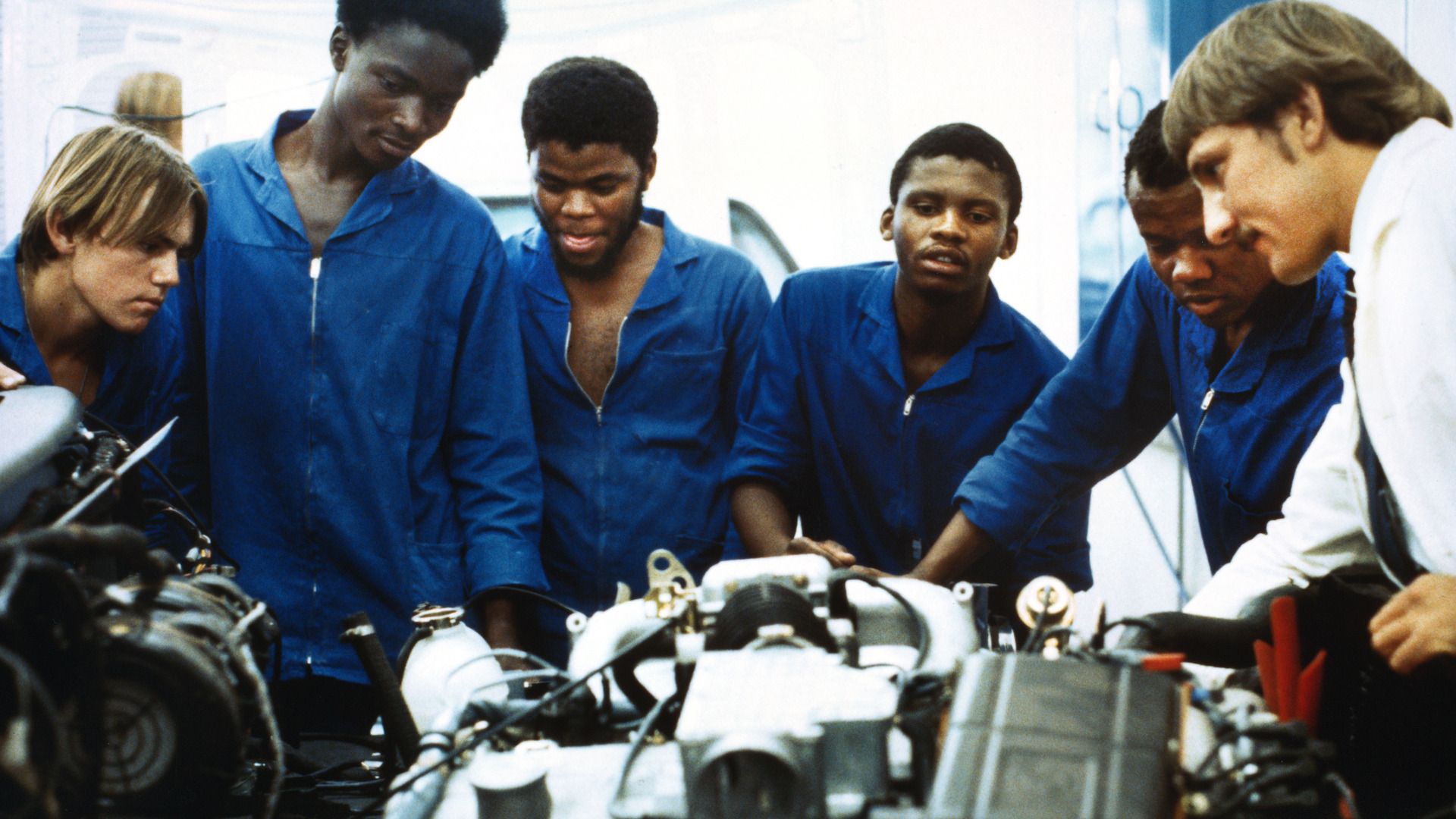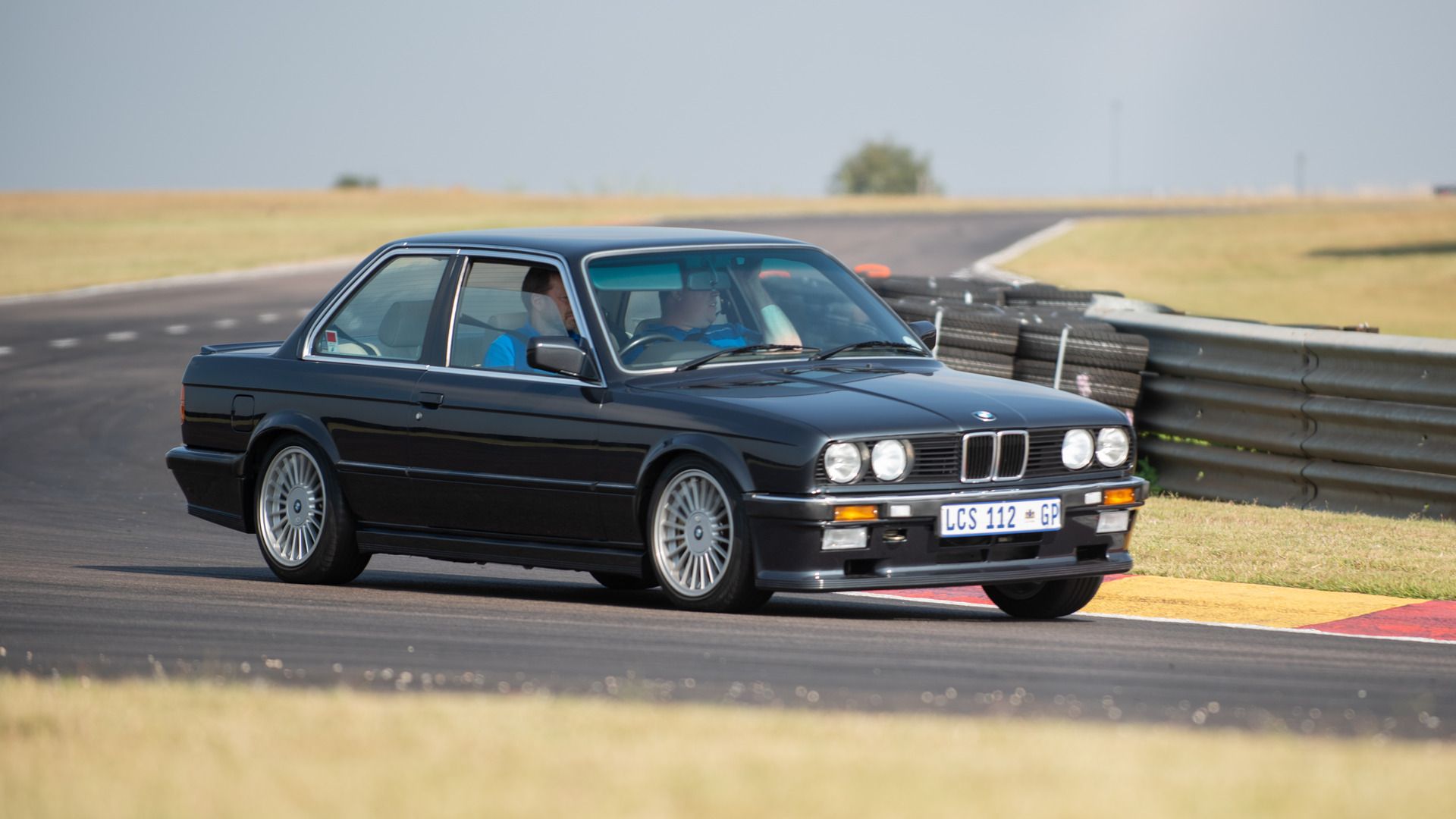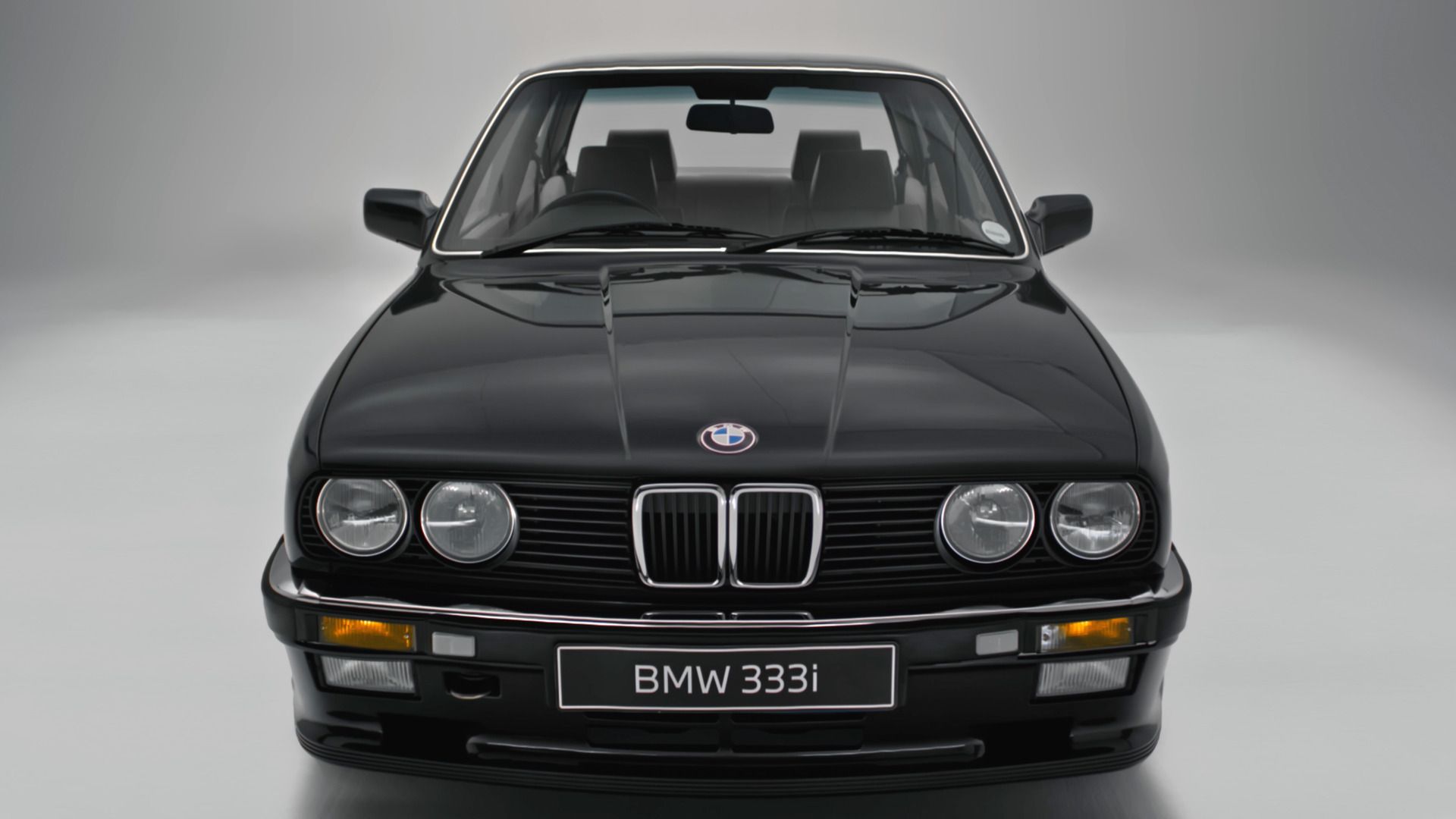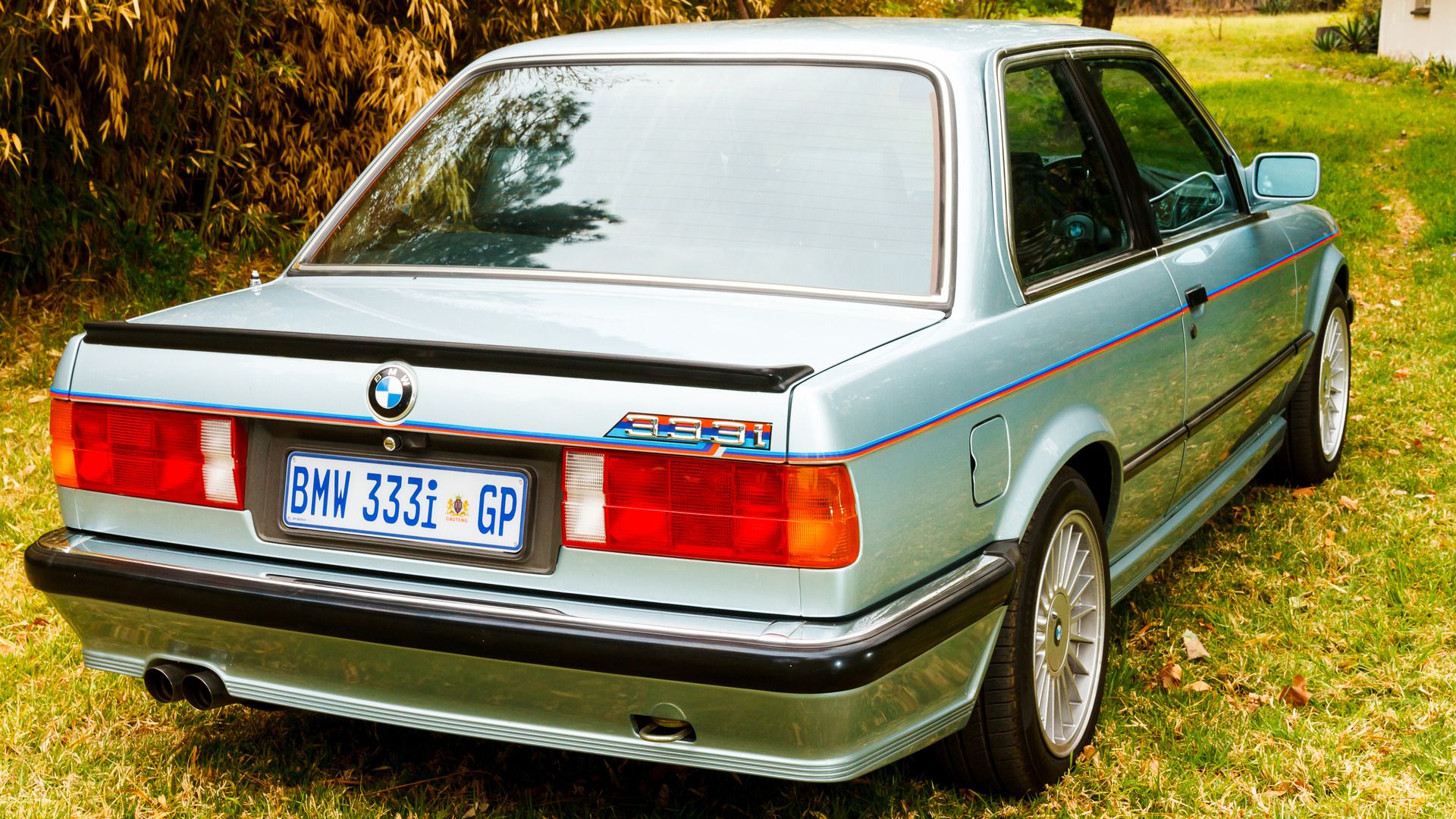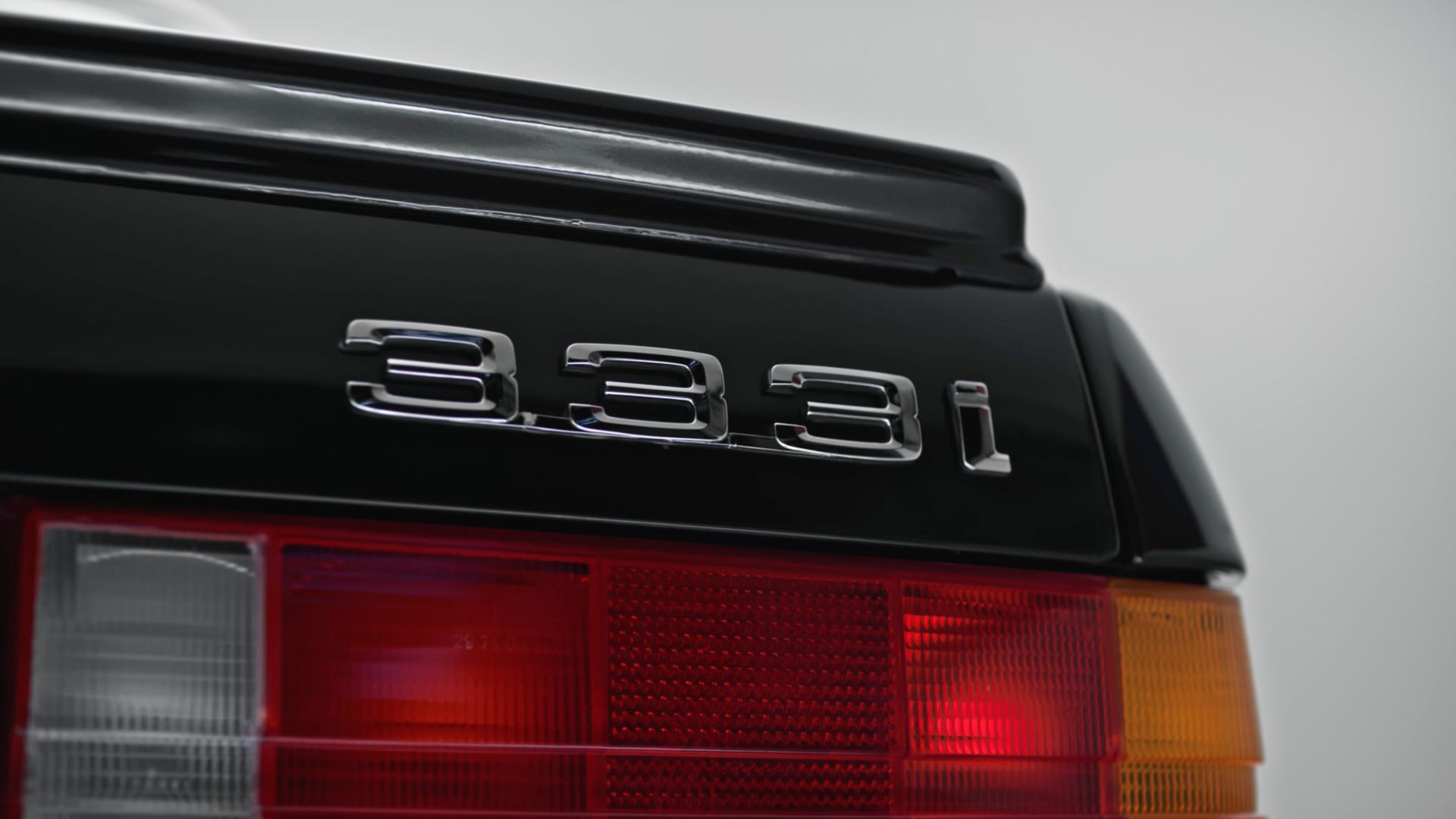Read update
- To ensure no car disappears in the history books, we updated this article to remind you of the South-African exclusive BMW 333i - the original M-light car if you will. Being a scarce classic BMW 3 Series only meant for a certain part of the world, not many remember the importance of the E30 3 Series. We're here to remind you of what once was.
When talking about the BMW E30, you probably think of the legendary 1989 BMW E30 M3. The legendary lightweight Bavarian coupe came in 1986, as a homologation model for the Group A, DTM series, and had a high-revving naturally aspirated four-cylinder engine. Although many consider the BMW M3 as the ultimate version of the E30, there is another much more obscure model, and wait till you learn what engine they put in it.
M division cars tend to be more special than the rest of BMW's lineup. Such is the case with the highly sought-after E46 BMW M3, for example. That said, serious car collectors might ignore a well-kept, classic BMW M3 if, and only if, something even more special, and rarer catches their eye, regardless of performance. Behold, the South African exclusive BMW E30 333i.
UPDATE: 2024/03/24 19:02 EST BY MARNUS MOOLMAN
To ensure no car disappears in the history books, we updated this article to remind you of the South-African exclusive BMW 333i - the original M-light car if you will. Being a scarce classic BMW 3 Series only meant for a certain part of the world, not many remember the importance of the E30 3 Series. We're here to remind you of what once was.
In order to give you the most up-to-date and accurate information possible, the data used to compile this article was sourced from BMW's official website and other authoritative sources, including Speedhunters.
The 333i Shares The Same Engine As An E23 BMW 7 Series
Based on the 325i E30, the 333i swapped its M20B23 inline-six for the bigger, M30B32 unit, used in the BMW E23 733i. While the E30 325i had a 2.3-liter naturally aspirated M20 straight-six under its hood that developed 168 horsepower, and the E30 M3 had a 2.3-liter four-cylinder that pushed out 200 horsepower - but power went down to 195 horsepower after adding the catalytic converted. In essence, the E30 333i was more powerful than both the other classic BMW 3 Series models.
The 333i's six-cylinder engine produced 197 horsepower and 210 pound-feet of torque. And as per usual, its power goes to the rear wheels, through a close-ratio, dog-leg, Getrag five-speed manual gearbox, and a ZF limited-slip differential. However, there were some drawbacks. Seeing as the new 3.3-liter straight-six had to fit underneath the E30's hood, there wasn't enough space for the A/C and the power steering, so you had to choose one.
BMW 333i M30B32 Engine Specs
|
Engine Configuration |
naturally aspirated inline-six |
|---|---|
|
Displacement |
3.2 liters |
|
Power |
197 hp @ 5,500 RPM |
|
Torque |
210 lb-ft @ 4,300 RPM |
|
Transmission |
5-speed manual |
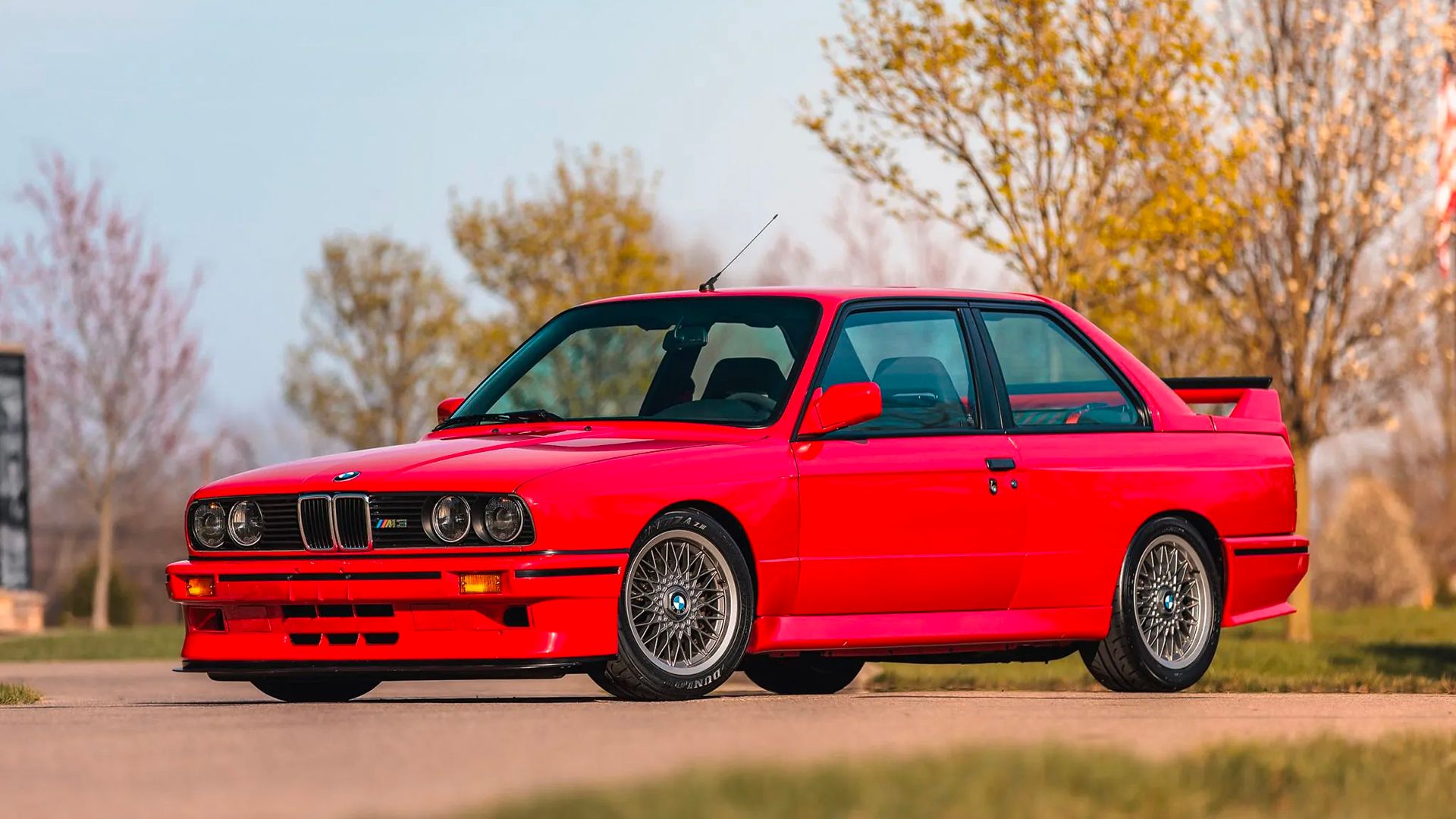
10 Things That Made The BMW M3 A Legendary Icon
BMW had one goal for the M3: Build a car that could compete in Group A racingAlpina And BMW Motorsport GmbH Helped Develop The 333i
Back before the days BMW acquired Alpina, BMW South Africa developed the triple three with help from Alpina, and BMW’s Motorsports division as individual entities. Alpina crafted unique exhaust manifolds, a heavy-duty copper-cored radiator, and various other cast iron alloy upgrades to create the ultimate factory-built E30 3 Series. Another major upgrade was the Bosch L-Jetronic fuel management system which resulted in a new torque curve that allows for much more punch at lower revs.
Exterior-wise, the classic BMW 333i came in four different colors, namely Henna Red, Ice White, Diamond Black, and Aero Silver.
Unique Features Of The BMW 333i
- M-Technik body kit
- M30B32 straight-six engine
- 16-inch Alpina wheels
- 195/50R16 Pirelli tires
- Bilstein gas dampers
- Instrument cluster with red needles
- Leather sports seats
- Leather-wrapped steering wheel
- Leather-wrapped gear knob, with classic M-stripe
The South-African M3
The BMW E30 M3 was never sold in South Africa, so the Bavarian company’s South African division came up with the BMW 333i. The recipe was simple and similar to the one applied to the critically acclaimed E92 BMW M3 – take the small and lightweight 3 Series and put the biggest possible engine in it. So, with the help of Alpina, the largest M30 straight-six found its way into the E30 3 Series body.
Alpina adored the M30 engine so much and was so confident in its engineering, that the company put the M30 under the hood of its specially-tuned E30. As a result, the 1986 Alpina B6S used the 333i's six-cylinder engine, instead of utilizing the E30 M3's M14.
BMW 330i VS BMW M3 Comparison
|
BMW E30 333i |
BMW E30 M3 |
|
|
Engine |
naturally aspirated 3.2-liter inline-six |
naturally aspirated 2.3-liter inline-four |
|
Transmission |
5-speed manual |
5-speed manual |
|
Horsepower |
197 hp |
195 hp |
|
Torque |
210 lb-ft |
177 lb-ft |
|
0-60 MPH |
7.4 seconds |
6.7 seconds |
|
Top Speed |
142 mph |
146 mph |
|
Production Years |
1985-1987 |
1986-1991 |
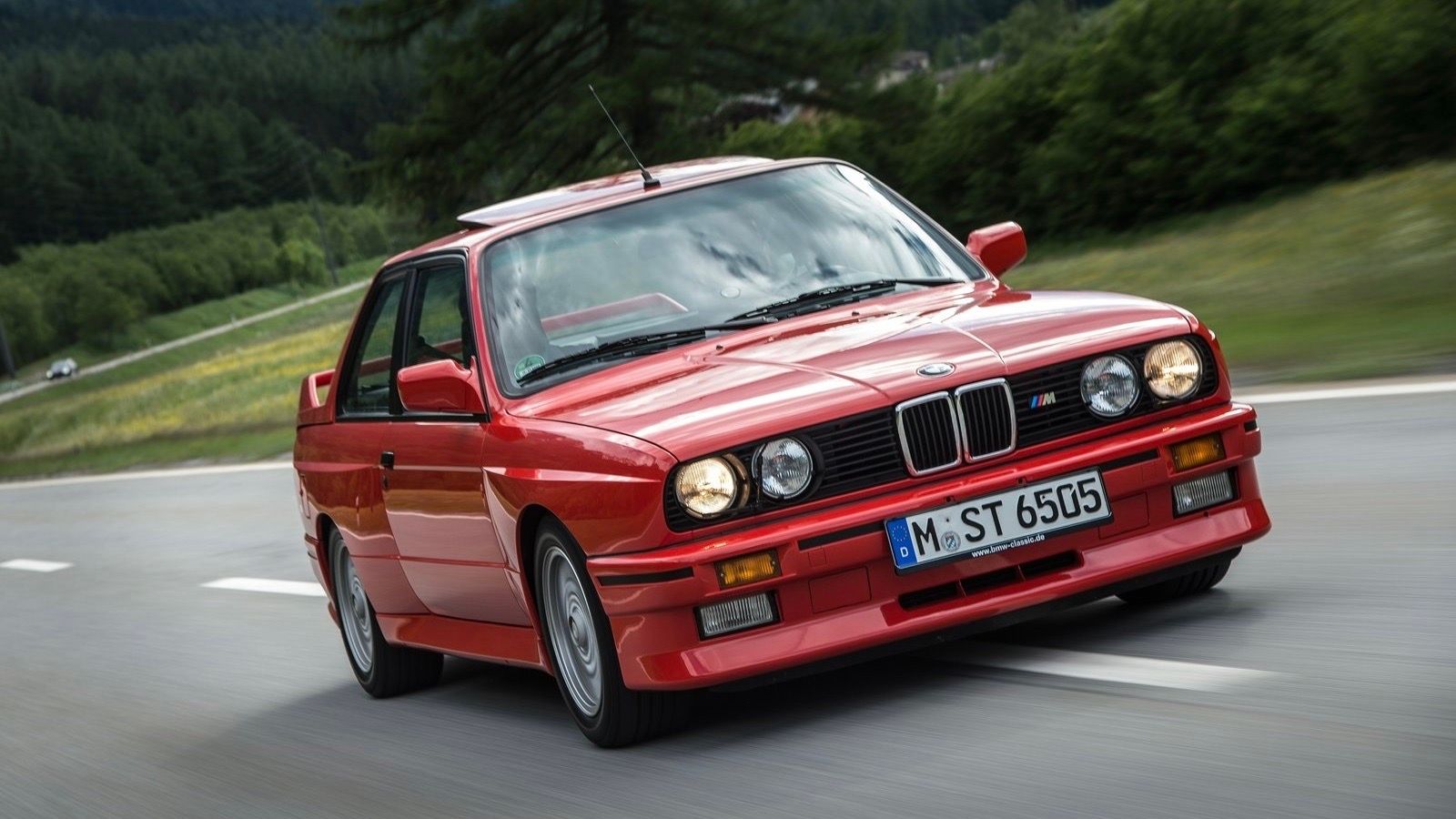
10 Fun Facts About The E30 BMW M3
The E30 M3 is a legend, and we can think of at least 10 reasons why it captured the hearts of so many fansLike The E30 M3, The 333i Was A Homologation Car
The triple three was built for racing, just like the highly-coveted BMW E30 M3. Instead of aiming to race internationally, BMW South Africa wanted the triple three 3 Series to dominate Group 1 Racing, leaving its competitors like the Ford Sierra XR8 and Alfa Romeo GTV 3.0 in the dust.
However, as soon as the car was put on sale, the race series it was meant for, was canceled. It’s safe to say that the BMW E30 333i suffered the same fate as the Ferrari 288 GTO Group B, which never saw any racing. Still, road-legal versions of the 333i only offered ABS as an optional extra, as well as a sunroof.
Much Rarer Than A BMW E30 M3
The coveted M3 E30 was produced for just over five years – from March 1986 to June 1991. Before the introduction of its successor, the legendary E36 BMW M3, a total of 17,970 examples of the E30 M3 were made. And, E30 M3 Coupes are selling for an average of $74,556 in 2024.
Despite being introduced around the same time - 1985 - the 333i was produced in much smaller numbers. Only 204 were made, and six prototypes, which is why this classic BMW 3 Series tends to be the more sought-after version by some collectors.
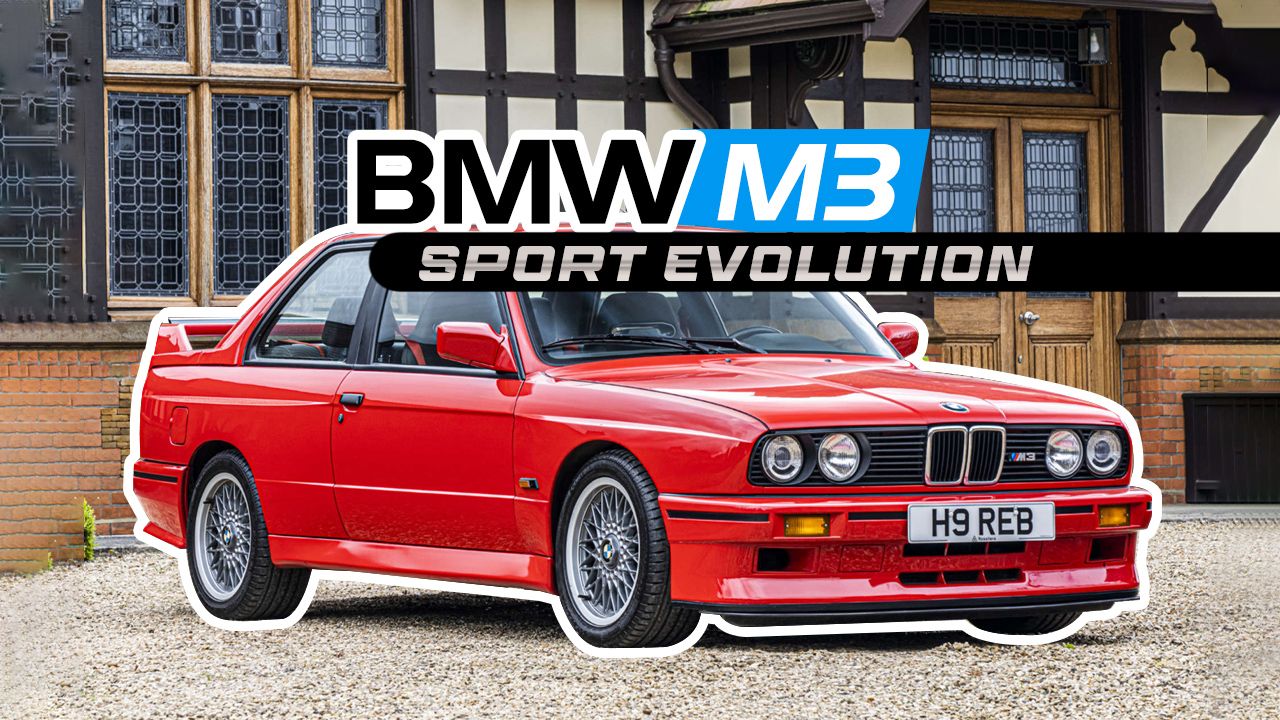
1991 BMW M3 Sport Evolution - The Quarter Million Dollar Unicorn?
One of the only 51 units sold in UKA Mix-Mash Of BMW M And Alpina Design Cues
There are obvious signs of collaboration between the two companies, to help the 333i stand out as its own model. On the outside, and the inside, the triple three looks like a Bimmer that’s been altered by Alpina, yet it retains elements from BMW's M division too. For example, the gear lever is a typical M-piece as well as the body kit comes from BMW’s M-division, and most of the interior looks like what you'd find in any other BMW 3 Series at the time.
Alpina Elements Found In The 333i
- three-spoke steering wheel
- 16-inch thin-spoke Alpina wheels
- Alpina logo in gauge cluster
- Alpina-made 296mm dual-vented and grooved front brake discs
Conclusion
The BMW 333i is one of those cars, born out of stubbornness and passion. South Africa never got the E30 BMW M3, so they made their own. Putting a big engine in a small car to make it faster is not a new formula, but it has given birth to some of the most iconic cars ever made, and the BMW 333i is up there with the greats. And despite not having an M badge, the 333i still gave the M3 a run for its money. Almost in the same way an M-lite car, like the BMW M340i xDrive does to the M3 Competition.
However, in 2024, this formula is almost nowhere to be found. Sadly, due to modern emissions regulations, we have more and more big cars with small engines, instead of the opposite. Therefore, cars like the 333i will be fondly remembered, and sadly, become even more unattainable.

